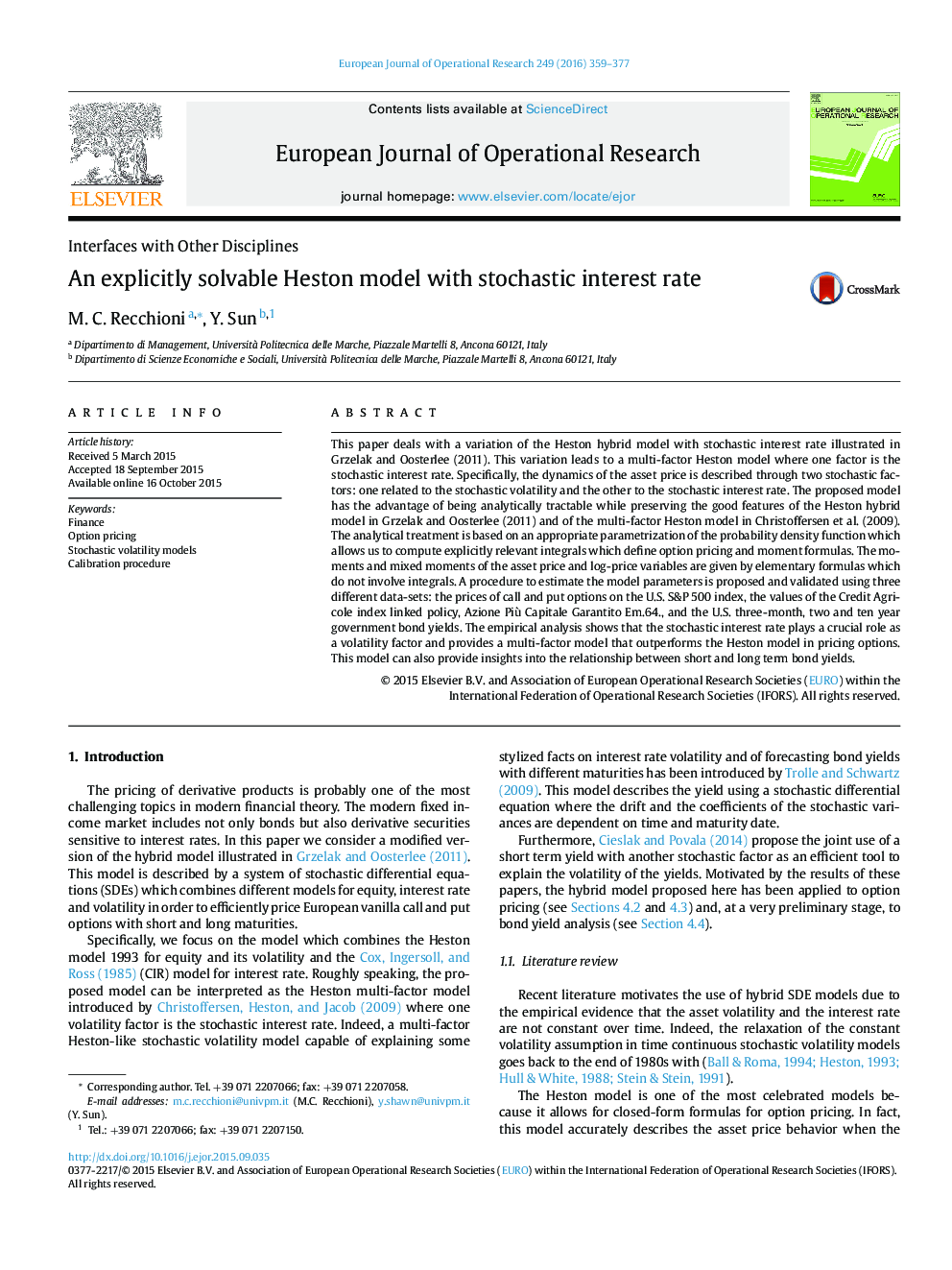| Article ID | Journal | Published Year | Pages | File Type |
|---|---|---|---|---|
| 479449 | European Journal of Operational Research | 2016 | 19 Pages |
•The analytical treatment of a Heston model with stochastic interest rate is illustrated.•A pdf as a one dimensional integral of an elementary integrand function is given.•Explicit formulas for the moments of the price variables are derived.•Closed-form formulas to approximate European option prices are proposed.•A calibration procedure is applied to option prices and U.S. government bond yields.
This paper deals with a variation of the Heston hybrid model with stochastic interest rate illustrated in Grzelak and Oosterlee (2011). This variation leads to a multi-factor Heston model where one factor is the stochastic interest rate. Specifically, the dynamics of the asset price is described through two stochastic factors: one related to the stochastic volatility and the other to the stochastic interest rate. The proposed model has the advantage of being analytically tractable while preserving the good features of the Heston hybrid model in Grzelak and Oosterlee (2011) and of the multi-factor Heston model in Christoffersen et al. (2009). The analytical treatment is based on an appropriate parametrization of the probability density function which allows us to compute explicitly relevant integrals which define option pricing and moment formulas. The moments and mixed moments of the asset price and log-price variables are given by elementary formulas which do not involve integrals. A procedure to estimate the model parameters is proposed and validated using three different data-sets: the prices of call and put options on the U.S. S&P 500 index, the values of the Credit Agricole index linked policy, Azione Più Capitale Garantito Em.64., and the U.S. three-month, two and ten year government bond yields. The empirical analysis shows that the stochastic interest rate plays a crucial role as a volatility factor and provides a multi-factor model that outperforms the Heston model in pricing options. This model can also provide insights into the relationship between short and long term bond yields.
